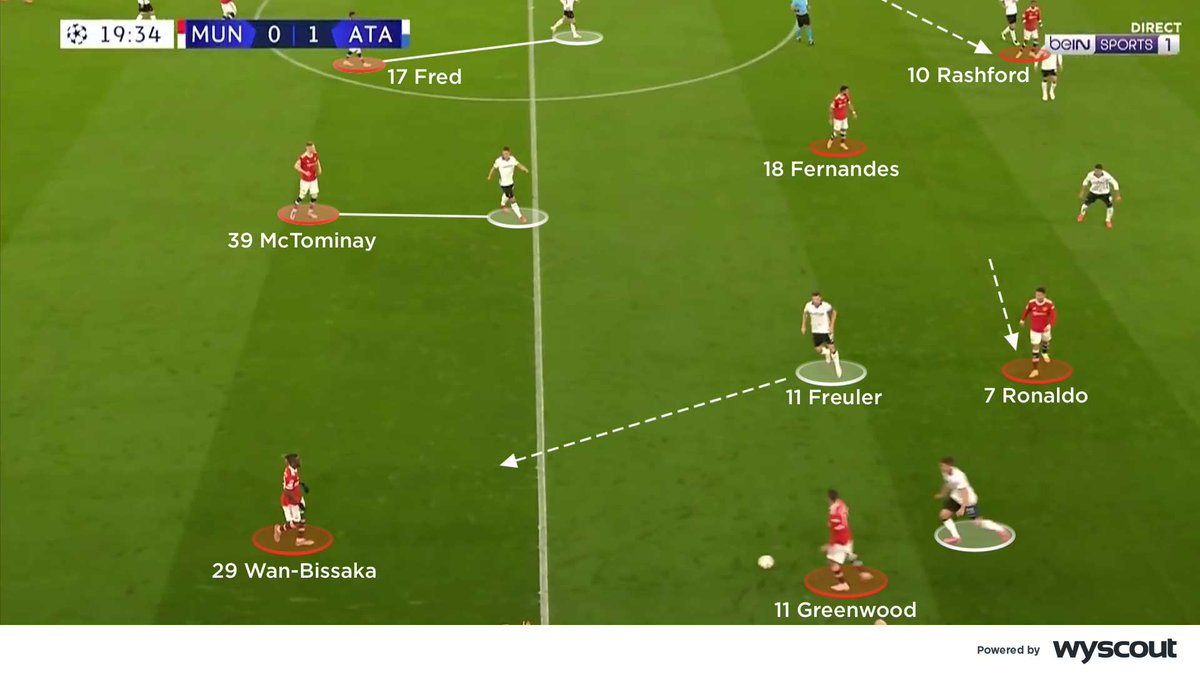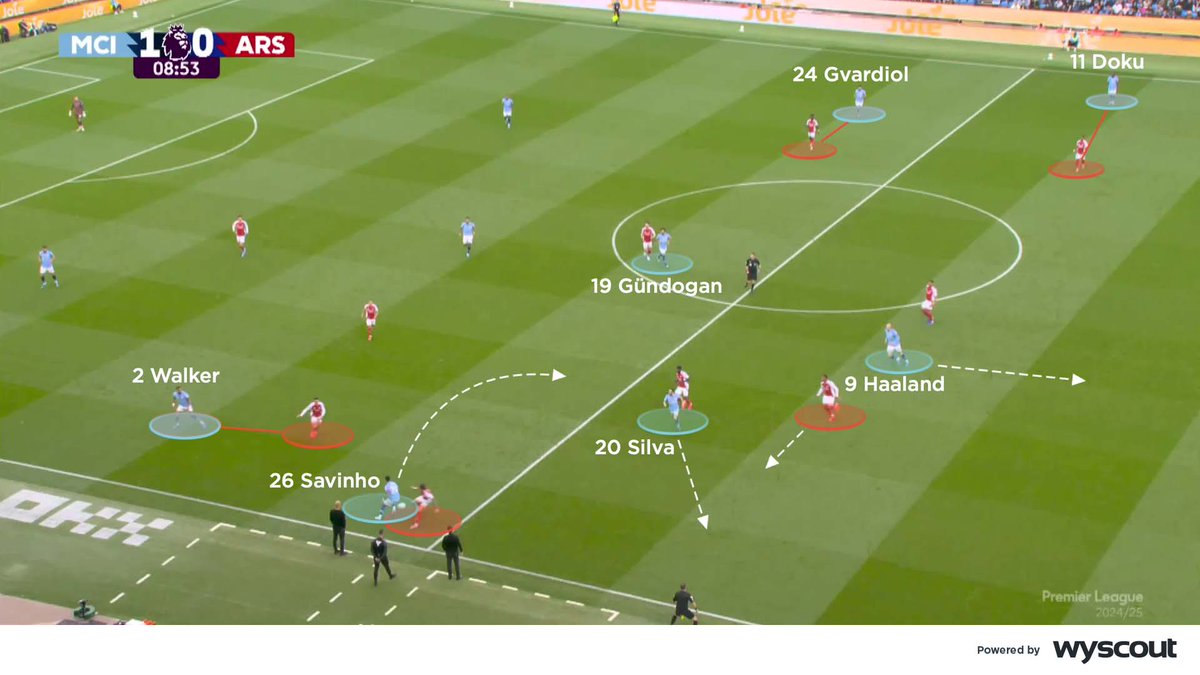Fresh analysis thread 🙌
Manchester United staged an impressive comeback from two goals down to move top of Group B and ease some of the pressure that had been building on Ole Gunnar Solskjaer... 🧐🧵
🔋 @Wyscout
#MUFC • #MUNATA
Manchester United staged an impressive comeback from two goals down to move top of Group B and ease some of the pressure that had been building on Ole Gunnar Solskjaer... 🧐🧵
🔋 @Wyscout
#MUFC • #MUNATA
Manchester United initially found it easier to progress possession towards the right, where, owing to Atalanta’s out-of-possession 5-3-2, Aaron Wan-Bissaka came under less pressure when receiving the ball... 🧐🧵 

When Atalanta adjusted to start pressing Fernandes - Demiral, from the centre of their back 3, usually did so – Fred withdrew into deeper territory to draw his marker and Shaw pulled wider on the left to tempt his opposing wing-back towards him and played balls in behind... 🧐🧵 

In their attempts to reduce the threat United posed from the left, De Roon advanced to press Shaw, and Zappacosta took Rashford, who during the second half attacked from a wider starting position... 🧐🧵 

When De Roon was moved into midfield, United found it easier to penetrate because of the increased space that existed in the attacking thirds – particularly during transitions. Cavani, Ronaldo and Fernandes often formed a narrow front three seeking to attack with pace... 🧐🧵 

The front two at the tip of Atalanta’s in-possession 3-5-2, Josip Ilicic and Luis Muriel, drifted into the inside channels to draw United’s central defenders into wider positions, at which point they bounced possession into an overlapping wing-back or Mario Pasalic... 🧐🧵 

The willingness of Freuler and Koopmeiners to withdraw into deeper territory invited Atalanta’s wing-backs to advance; their front two continued to drift wide, but also then had increased space to withdraw backwards and provide a passing option back infield... 🧐🧵 

The more advanced positions Atalanta’s wing-backs took succeeded in drawing United’s full-backs away from their defensive line; Ilicic and Muriel, in turn, targeted the spaces they vacated... 🧐🧵 

The increased pressure United applied throughout the second half led to De Roon being moved into midfield, where he operated from the base of the diamond, and Freuler and Koopmeiners moving across to support inside of the overlapping full-backs providing their width... 🧐🧵 

• • •
Missing some Tweet in this thread? You can try to
force a refresh
















